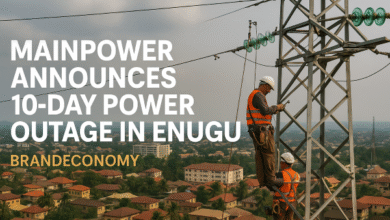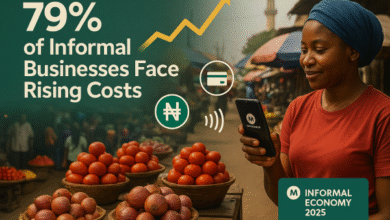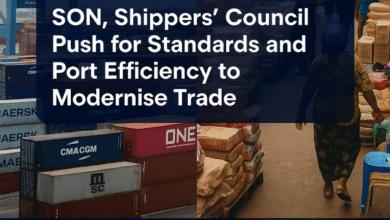Nigerian Banks Show Strength as 14 Lenders N500B Recapitalisation Thresholds — What It Means for the Economy, Investors, and the Future of Finance

The Central Bank of Nigeria (CBN) has confirmed that 14 banks have fully met the new recapitalisation thresholds in one of the most ambitious banking reforms in two decades. The policy, designed to strengthen resilience, deepen credit capacity, and boost global competitiveness, is reshaping Nigeria’s financial system at a pivotal moment for growth.
A Milestone Moment for Nigerian Banking
The Nigerian banking sector has once again reached an inflection point. At the conclusion of its 302nd Monetary Policy Committee (MPC) meeting in Abuja, CBN Governor Yemi Cardoso announced that 14 banks have fully met the new minimum capital requirements set under the apex bank’s ongoing recapitalisation drive.
This is the first major systemic capital reform since 2004, when then-CBN Governor Charles Soludo raised the minimum capital base from ₦2 billion to ₦25 billion, triggering a wave of mergers and acquisitions that reduced the number of banks from 89 to 25. That reform created the strong Tier-1 banks that dominate today.
Now, with new thresholds of ₦500 billion for internationally licensed banks, ₦200 billion for national commercial banks, and ₦50 billion for regionals and merchant banks, the CBN is recalibrating the system to meet larger credit demands, withstand systemic shocks, and compete globally.
Cardoso reassured Nigerians that the process is progressing smoothly: “Members of the MPC acknowledge the significant progress in the ongoing recapitalisation exercise. Fourteen banks have fully met the new capital requirement. We urge others to sustain efforts toward full compliance.”
The Numbers That Matter
- International commercial banks: ₦500bn minimum capital.
- National commercial banks: ₦200bn.
- Regional commercial banks & merchant banks: ₦50bn.
- Non-interest (Islamic) banks: ₦20bn (national), ₦10bn (regional).
- Forbearance & waivers: Successfully terminated, reinforcing transparency and risk management.
This means Tier-1 banks like Access, Zenith, GTBank, and UBA are already comfortably within range, while mid-tier and smaller players must either raise capital, merge, or risk losing relevance.
Sector-by-Sector Analysis
1. Tier-1 Banks (International Licence)
Banks like Access, Zenith, GTBank, UBA, and Stanbic IBTC have either surpassed or are on track to surpass ₦500bn. These institutions dominate balance sheets and are better positioned to attract foreign capital, issue Eurobonds, and finance big-ticket infrastructure or oil & gas projects.
Investor Implication: Tier-1 banks become even safer bets for institutional investors, capable of absorbing shocks and supporting government borrowing programmes.
2. Mid-Tier and Regional Banks
Players like Wema Bank, Fidelity Bank, and FCMB face pressure to either raise fresh equity or seek mergers. The ₦200bn and ₦50bn thresholds test their ability to diversify earnings, attract capital, and scale digital platforms.
Investor Implication: Expect M&A activity as weaker banks consolidate. Shareholders in mid-tier banks may benefit from premiums in acquisition deals, but laggards risk dilution.
3. Merchant and Non-Interest Banks
With lower thresholds (₦50bn for merchant, ₦20bn/₦10bn for non-interest), these players have more manageable targets. Jaiz Bank, for instance, has already confirmed compliance. Growth potential lies in niche segments: Islamic finance, trade facilitation, and corporate treasury services.
Investor Implication: Investors seeking long-term growth in alternative banking may look to non-interest finance as a diversification play.
4. Systemic Stability and Risk Management
Cardoso highlighted the end of forbearance measures (such as relaxed single-obligor limits), which had previously allowed banks to stretch exposures. This move enhances transparency, accountability, and risk controls.
Investor Implication: Improved governance reduces systemic risks, supporting stronger credit ratings and investor trust in Nigerian banks.
Monetary Policy Context: A Dual Reform Agenda
The recapitalisation update came alongside news that the MPC cut the Monetary Policy Rate (MPR) by 50 basis points to 27%—the first rate cut since 2020. Other measures included:
- Commercial bank CRR: reduced from 50% to 45%.
- CRR on non-TSA public deposits: raised to 75% (to sterilise fiscal liquidity).
- Liquidity ratio: retained at 30%.
- Asymmetric corridor: narrowed to +250/-250bps.
This shows the CBN is threading a fine balance—easing credit conditions for the private sector while ensuring excess liquidity from fiscal spending doesn’t trigger inflation.
BRANDECONOMY Takeaways for Decision-Makers
- Banks:
- Tier-1s should capitalise on their stronger buffers to expand regionally and deepen digital transformation.
- Mid-tiers must urgently pursue capital raises, strategic partnerships, or mergers to avoid being left behind.
- Tier-1s should capitalise on their stronger buffers to expand regionally and deepen digital transformation.
- Government/Regulators:
- Complement recapitalisation with fiscal reforms (FX stability, energy, infrastructure) to ensure credit growth translates into real-sector expansion.
- Continue phasing out forbearance to sustain credibility and discipline.
- Complement recapitalisation with fiscal reforms (FX stability, energy, infrastructure) to ensure credit growth translates into real-sector expansion.
- Investors (Local and Foreign):
- Nigerian banking equities are entering a new phase—expect valuation rerating for strong banks, while consolidation risks create opportunities for M&A arbitrage.
- Dividend sustainability improves for compliant banks with large buffers.
- Nigerian banking equities are entering a new phase—expect valuation rerating for strong banks, while consolidation risks create opportunities for M&A arbitrage.
- Businesses:
- Larger, stronger banks mean greater access to long-term credit for corporates and SMEs, though lending rates will adjust gradually.
- Borrowers should position early to build relationships with recapitalised lenders.
- Larger, stronger banks mean greater access to long-term credit for corporates and SMEs, though lending rates will adjust gradually.
- Consumers:
- While the immediate impact may not be lower lending rates, recapitalisation supports a more stable banking system, protecting deposits and expanding access to digital financial services.
- While the immediate impact may not be lower lending rates, recapitalisation supports a more stable banking system, protecting deposits and expanding access to digital financial services.
Historical Parallels and Lessons
The 2004 recapitalisation created the mega-banks that today define Nigeria’s financial system. The 2025 exercise is bigger in scale, but more targeted, with differentiated thresholds to reflect bank categories.
The lesson is clear: recapitalisation breeds consolidation, stronger players, and system-wide stability—but also squeezes out weaker banks that cannot adapt.
The Bigger Picture
This recapitalisation is not just about numbers; it is about future-proofing Nigeria’s banking industry. With a ₦500bn minimum capital for Tier-1 banks, Nigerian lenders can compete more effectively with peers in South Africa, Egypt, and Morocco, financing mega projects in oil, gas, infrastructure, and technology.It also positions banks to support the government’s Renewed Hope Agenda, funding housing, power, and industrialisation projects critical to achieving $1 trillion GDP aspirations.











